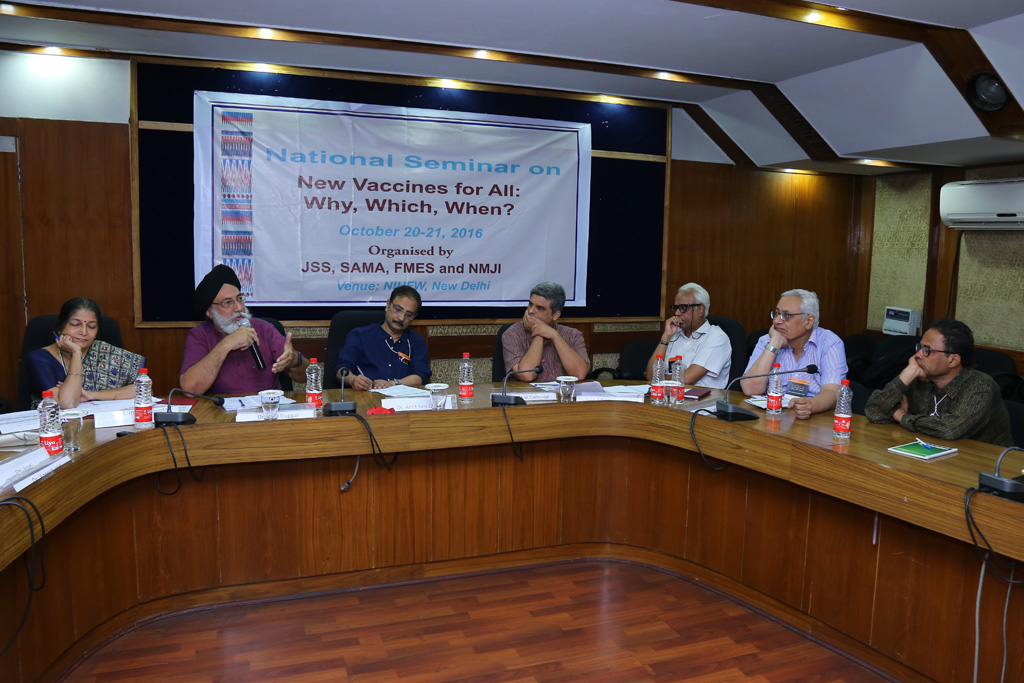
Prof. V.R. Muraleedharan (IIT Madras), Dr. Rakhal Gaitonde (IIT Madras), Dr. Ravi Duggal (International Budget Partnership) and Prof. Indrani Gupta (Institute of Economic Growth) shared their expert insights concerning this topic.
- The purpose of economic evaluation helps to select more efficient options (with a good cost/effect relationship) and could help in the distribution of health resources in a more just and balanced manner. It contributes to the rational use of medicines/interventions by incorporating cost to questions on safety, efficacy and quality of different medical therapies/interventions, and to the search for a better relationship between costs and results. It also focuses upon the costs and benefits of drug, therapy/programmes/ Interventions, limited resources setting, maximum health impact from a given budget and cost-effective intervention.
- The economic evaluation of the costs and health effects of vaccines also depends on resources. Health resources should be allocated across interventions and population groups to generate the highest possible overall level of population health, to improve efficiency. Which costs and outcomes are considered relevant and should therefore be included in the analysis?
- The costing system needs to be strengthened and take into consideration all type of costs. The non-availability of good baseline information or data remains to be challenge. There are issues with regard to access wherein it is seen that UIP coverage is about 60 percent and there is wide variation across states. It makes a strong case to challenge only one set of cost effective analysis (CEA). It should be done at the state level if not at the district level.
- Even though the complexities of making cost effectiveness studies are known, it remains a challenging task to make evidence based decisions without a good public health system, without disease prevention system within it and without other systems in place, which include ways to calculate cost and effectiveness.
- Costs of new vaccines are very high. About Rs.9 to Rs.11 per capita is spent on vaccines in each State. About 50-60% on the vaccines and the remaining on other things like injections, refrigerators, etc. But, with the newer vaccines, almost Rs.35 per capita is being spent just for the vaccine and the additional things that are required to conduct the vaccination programme increases the vaccine cost per capita up to Rs.75/- . The cost analysis of vaccines needs to be improved. Vaccines selected or analysed should require the costs to be considered.
The discussions raised concerns about how we do not have reliable data to assess cost effectiveness, which presents a challenge of lack of evidence to decide upon the inclusion of specific vaccines. Studies show that countries consider efficacy, safety and effectiveness very rarely. The disease burden is a key factor while deciding on vaccines. Programmatic considerations with a weak health system should be a major concern, but it is usually not considered.
- There is also a dearth of literature and studies on the community acceptability of vaccines in the Indian context. Accessibility, ethics and equity are infrequently considered and system costs are rarely mentioned. Vaccine price is seen to be an important variable in deciding on including a new vaccine in a national programme.
Highlights from the Seminar Sessions
Session I: Present Status of Children’s Health and Vaccination
Session II: Prioritisation of Interventions for Disease Prevention
Session III: Inclusion of new vaccine in the UIP: How effective are new vaccines?
Session IV: Inclusion of new vaccine in the UIP: Risk assessment and safety of vaccine
Session V: Ethics and Regulations
Session VI: Inclusion of new vaccine in the UIP: Cost effectiveness and Financial issues
Session VII: Inclusion of New Vaccines in the UIP: Health System Preparedness
Recommendations
Annexures
Annexure 1: Background Note of the Seminar
Annexure 2: Seminar Schedule
Annexure 3: Organisers of the Seminar
Annexure 4: List of Participants



